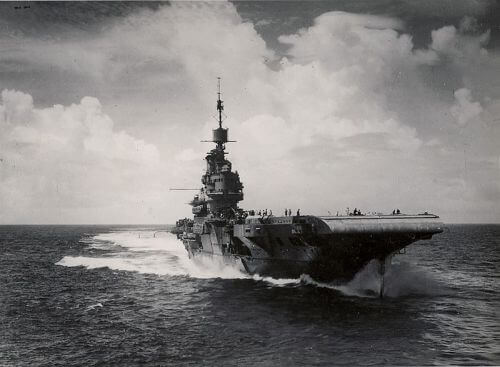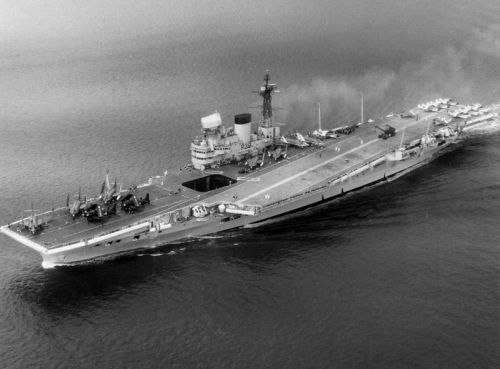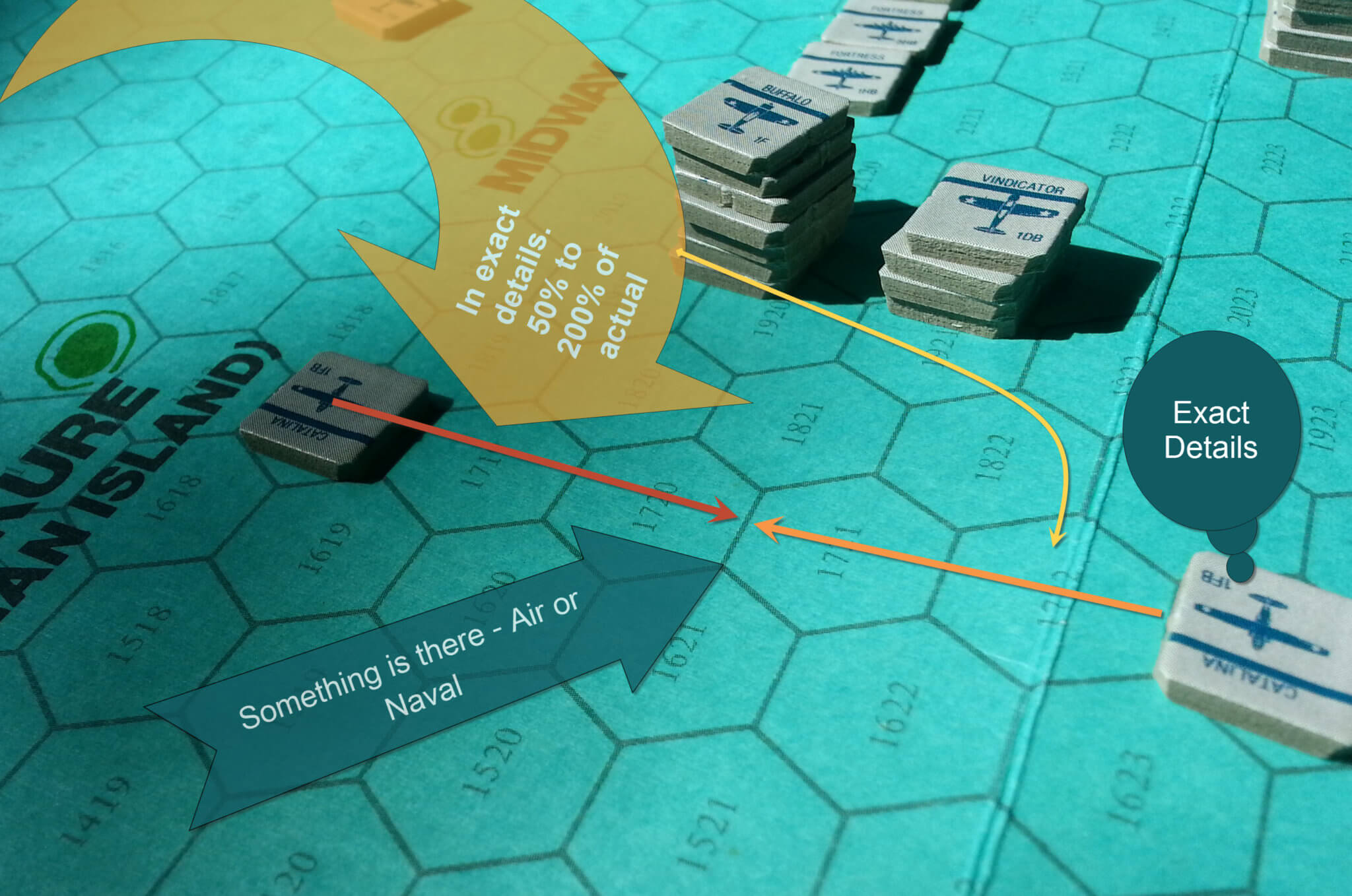
In the mid-1930s the Royal Navy recognized the need to develop and built new Fleet Carriers. The Illustrious Class of four ships was ordered as part of the 1936 Naval Program. The four ships of the class HMS Illustrious, HMS Formidable, HMS Victorious and HMS Indomitable were some of the most important ships to see service in the Royal Navy in the Second World War and would see action in the Atlantic, Arctic, Mediterranean, Indian Ocean and Pacific.
They were tough ships and all sustained serious damage at least once in their careers that might have sunk other ships. Different in concept than the Royal Navy’s only modern carrier the Ark Royal they displaced more than the U.S. Navy Yorktown Class and just somewhat less than the following Essex Class ships although they were over 100 feet shorter in length as compared to the American ships.
The class was built with an armored flight deck which covered the hangar deck with both as an integral part of the ship’s structure and defense. The American ships hanger and flight deck were part of the superstructure with the armored deck being that of the hangar deck itself. This provided advantages in protection against bombs and later Kamikazes but there was a trade off in both aircraft capacity and the ability for the ships to handle the larger aircraft that came into service following the Second World War.
As designed the ships carried just 36 aircraft as compared with the 80-100 aircraft of the American ships and the 72 that the Ark Royal was rated at. Later in the war the Royal Navy adopted the American practice of an air park on the flight deck which increased their capacity to up to 70 aircraft.


http://padresteve.com/2010/12/29/four-of-a-kind-the-illustrious-class-aircraft-carriers/ read more at the link.
The fourth Victorious was the third ship in the Illustrious Class of 23,000 ton armoured Fleet carriers.
She had a distinguished career throughout the Second World War with operations ranging from the Atlantic and Arctic Oceans to the Far East. In 1941, just one week after she had been commissioned, she was taking part in convoys to Malta.
It was Swordfish from her flight deck which dealt the blows that crippled the Bismarck. She then went on to spend te winter of 1941-42 covering the Northern Russian convoys.
In late 1942, following the loss of USS Hornet and damage to USS Enterprise in the battle of Santa Cruz, the US Navy had only one fleet carrier, USS Saratoga, for service in the Pacific.
In response to an American plea for carrier reinforcement, HMS Victorious was withdrawn from the Home Fleet and sent to the United States for a refit to suit her to the conditions of war in the Pacific: amongst other, more warlike, modifications, she was also fitted with an ice cream maker and Coca Cola machines.
By May 1943 she was ready to join USS Saratoga on operations in the Pacific, and with the American carrier, provided cover to the fleet assembled for the invasion of New Georgia in the Solomon Islands.
For the purposes of security, signals generally referred to HMS Victorious as “USS Robin” while she was serving alongside the Americans, but she was fairly universally known to them as ‘the Limey flat top’.
By July 1943, the first of the new American “Essex” and “Independence” classes of aircraft carriers were entering service, and HMS Victorious returned to the war against Germany, although in 1944 she went back to the Pacific with the British Pacific Fleet for the final operations of the War.
In June 1944 she was re-deployed to join the Eastern Fleet, supporting American landings at Padang, Okinawa and Saishimo Gunto during which time she survived concerted kamikaze attacks thanks to her specially armoured flight deck.
Victorious was taken over by the Portsmouth Dockyard in July 1950 for major modernisation, this was prolonged to include the latest devices and equipment, this was, at the time, the largest task ever undertaken by a Royal Dockyard.
During the seven years of refit, the ship was completely rebuilt from the hanger deck. Victorious was 775′, fully angled 8¾°, which was 4 feet higher than it’s predecessor.
Two parallel track 145 feet steam catapults and two mirror deck landing sights.
Two hydro-pneumatic high speed lifts, providing twice as much lift area than the previously installed lifts.
Larger boilers provided steam for the catapults as well as motive power for the ship.
The main electric generating capacity was increased from 2,400 Kilowatts to 4,200 Kilowatts.
The radar fitted in Victorious was the best ship-borne air defence radar system in the world at that time
H.M.S. Victorious, commissioned 14th January 1958 as the latest carrier for the Royal Navy and sailed from Portsmouth for preliminary Sea Trials on 3rd February – a glorious day.

